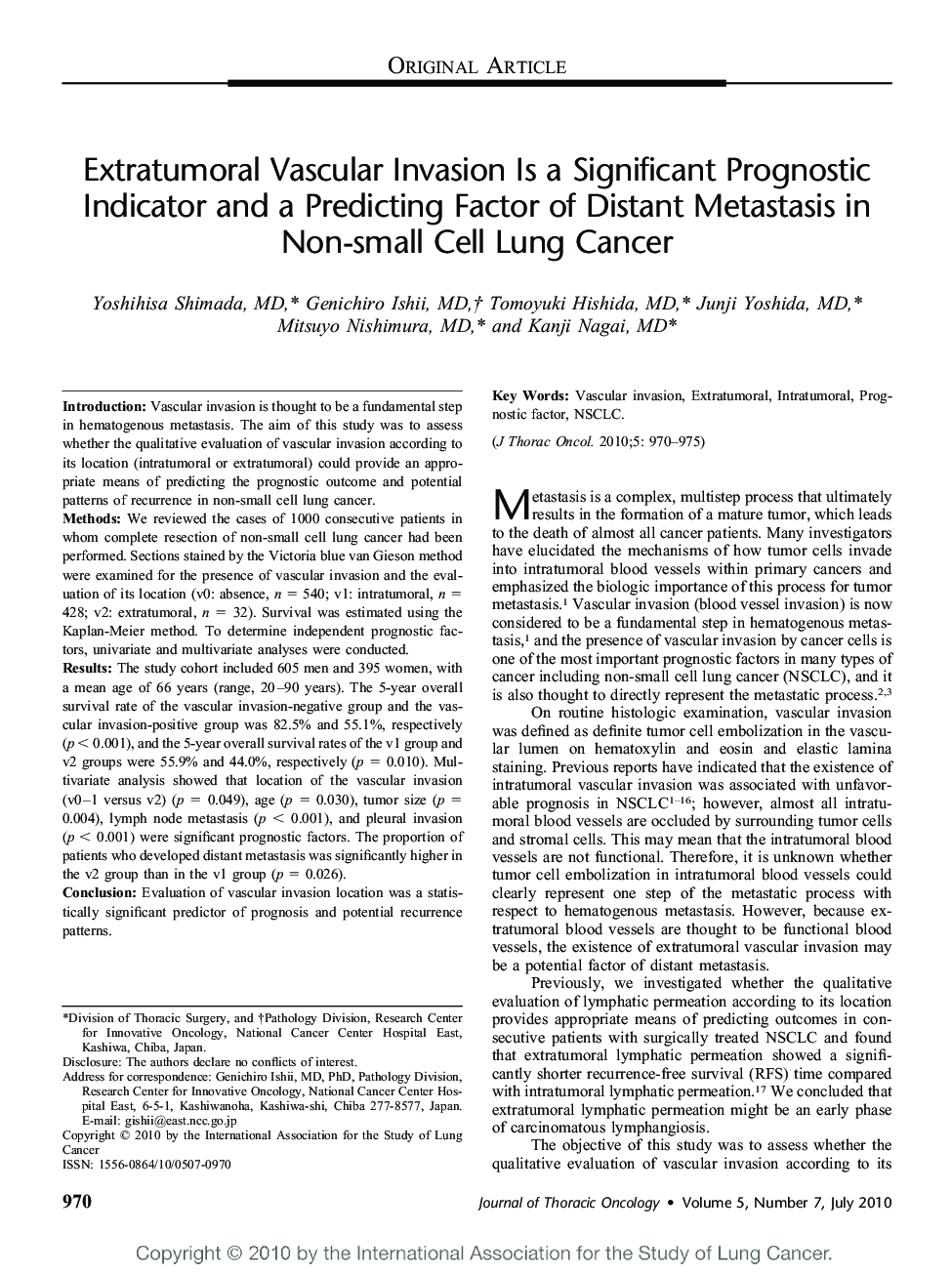| Article ID | Journal | Published Year | Pages | File Type |
|---|---|---|---|---|
| 3990302 | Journal of Thoracic Oncology | 2010 | 6 Pages |
IntroductionVascular invasion is thought to be a fundamental step in hematogenous metastasis. The aim of this study was to assess whether the qualitative evaluation of vascular invasion according to its location (intratumoral or extratumoral) could provide an appropriate means of predicting the prognostic outcome and potential patterns of recurrence in non-small cell lung cancer.MethodsWe reviewed the cases of 1000 consecutive patients in whom complete resection of non-small cell lung cancer had been performed. Sections stained by the Victoria blue van Gieson method were examined for the presence of vascular invasion and the evaluation of its location (v0: absence, n = 540; v1: intratumoral, n = 428; v2: extratumoral, n = 32). Survival was estimated using the Kaplan-Meier method. To determine independent prognostic factors, univariate and multivariate analyses were conducted.ResultsThe study cohort included 605 men and 395 women, with a mean age of 66 years (range, 20–90 years). The 5-year overall survival rate of the vascular invasion-negative group and the vascular invasion-positive group was 82.5% and 55.1%, respectively (p < 0.001), and the 5-year overall survival rates of the v1 group and v2 groups were 55.9% and 44.0%, respectively (p = 0.010). Multivariate analysis showed that location of the vascular invasion (v0–1 versus v2) (p = 0.049), age (p = 0.030), tumor size (p = 0.004), lymph node metastasis (p < 0.001), and pleural invasion (p < 0.001) were significant prognostic factors. The proportion of patients who developed distant metastasis was significantly higher in the v2 group than in the v1 group (p = 0.026).ConclusionEvaluation of vascular invasion location was a statistically significant predictor of prognosis and potential recurrence patterns.
